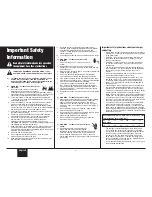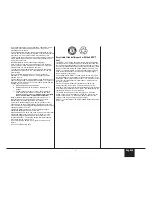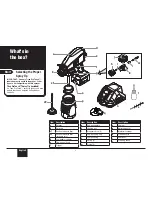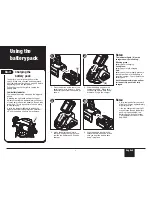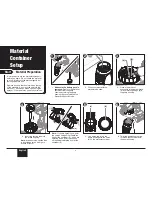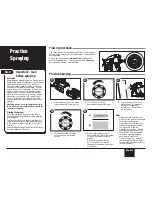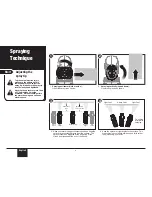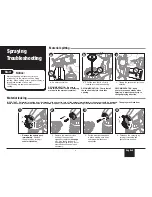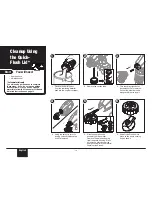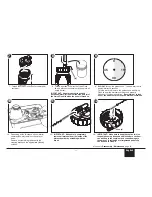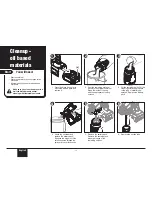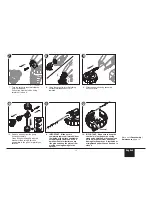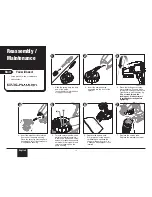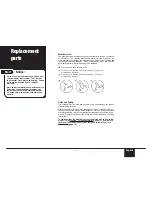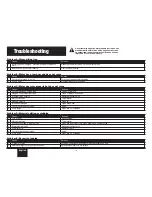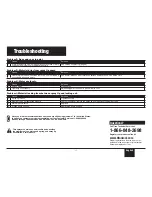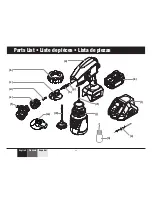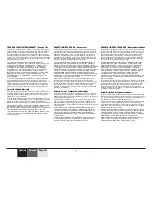
English
7
Safety
Start
Practice
Spraying
Start
Important - read
before spraying
Flow Control Knob
Practice Spraying
Overspray
Some sprayed materials create a cloud of paint.
Some of that cloud will spray past your intended
object and also bounce off of it. Wind and
air currents may cause this cloud to drift onto
surfaces not intended to be sprayed. You can
control the amount of overspray and bounce-
back by adjusting your flow and moving the
sprayer closer to the work piece, but always
make sure that you have a good spray pattern.
Always test your pattern on a scrap piece of
wood or cardboard, and make sure that you
have drop cloths protecting anything not being
sprayed.
Anything you do not want painted that is in
the area of your spraying surface should be
covered or removed.
Priming the Sprayer
Once you are ready to spray, it may take
several seconds for material to spray after you
pull the trigger.
The sprayer may sound choppy, while at the
same time spit or spray large globs briefly prior
to the spray coming out in a fine mist. This is
normal.
Keep holding the trigger and material will come
from the sprayer in a fine mist.
1. Slide the battery pack into place
inside the handle of the sprayer.
4. Turn the flow knob clockwise
until you have a good spray
pattern.
2. Turn the flow knob fully
counterclockwise to maximum.
5. A poor spray pattern (a) will
concentrate the paint in the center
of the spray pattern and go on
blotchy.
A good spray pattern (b) has
an even amount of material
throughout the pattern and will go
on smoothly.
3. Point the sprayer at a scrap
piece of wood or cardboard,
and pull the trigger until
material sprays evenly from
the spray gun.
The spray pattern is controlled by the Flow Control Knob on
the rear of the sprayer, and by the thickness of the material
being sprayed.
Turning the flow knob counterclockwise increases the
amount of material flow. Turning the flow knob clockwise
decreases the amount of material flow.
Notes:
• Always practice spraying on a
piece of scrap wood or cardboard
to test your spray pattern.
• If you adjust the flow knob and
still cannot get a good pattern,
you may need to thin the
material you are using. Always
test spraying without thinning
the material. Thin as required
to achieve optimum spraying
performance (refer to #5).
• If you are spraying a material
that needs to be thinned, make
sure to follow the manufacturer’s
recommendations.
a)
b)
1
4
2
5
3


